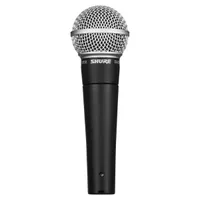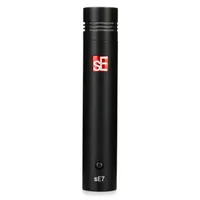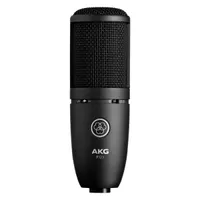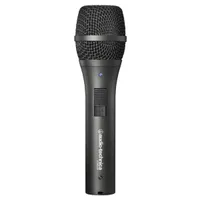Best cheap microphones for recording 2025: Budget microphones for the home studio
Record at home for less with my pick of the best budget recording microphones around
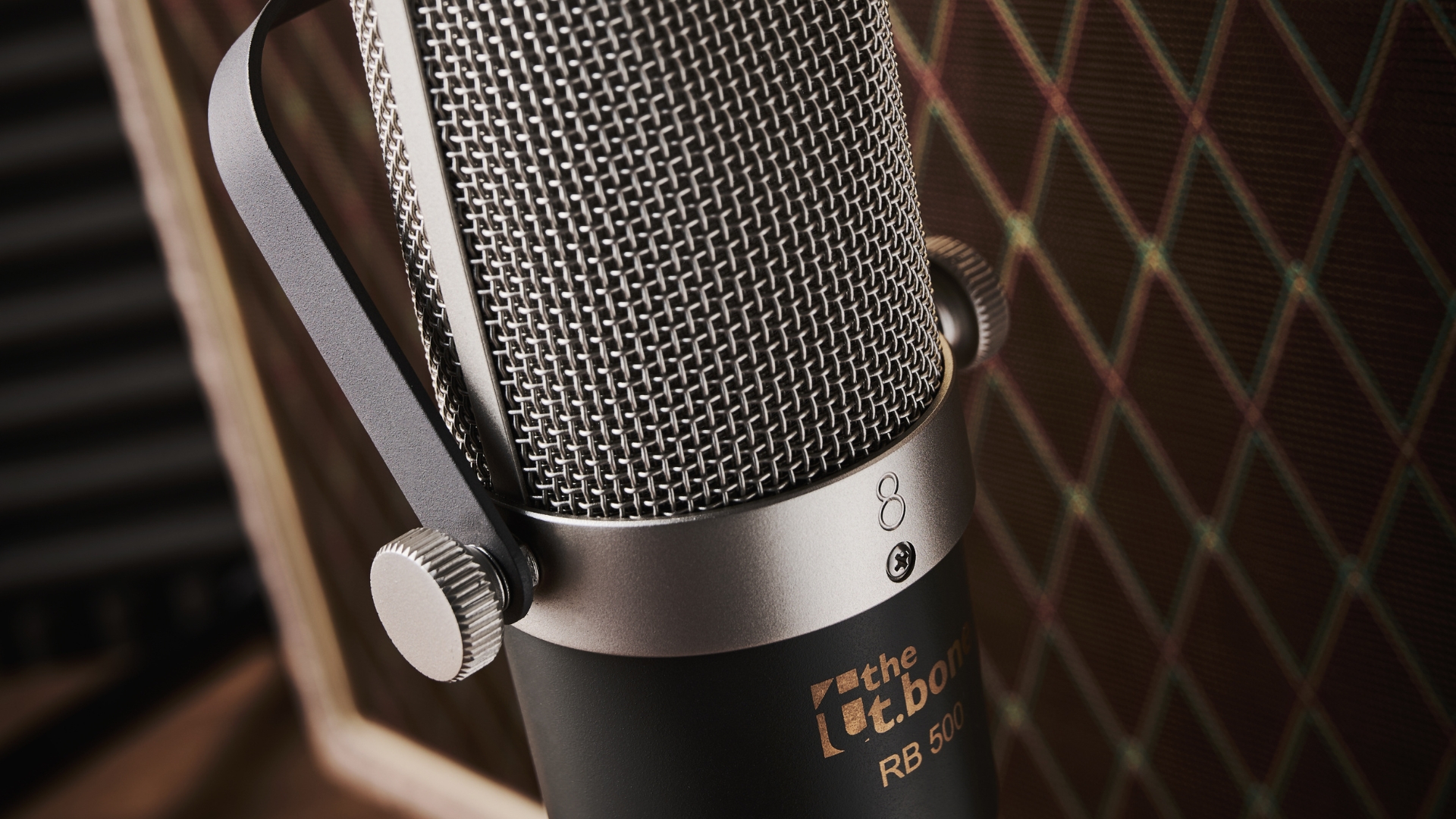
As the price of studio time increases and wages stagnate, getting your hands on one of the best cheap microphones for recording has now become an even more important part of making music in the modern era. Thanks to the rapidly reducing prices of tech and improvement in the software side, there's now no reason you can't get a quality recording from the comfort of your home.
I've been recording bands at home for the last 15 years and although nowadays I'm more likely to be found in a 'proper' studio, I still know you can get great results at home with the right equipment. There's such an abundance of great microphones out there that along with some decent room treatment, and a great performance of course, you can get some really solid takes without having to spend big on a studio.
If you're after a true all-rounder microphone for relatively little money, the Audio-Technica AT2020 takes the top prize for me. It's ridiculously cheap for how it performs, and you can use it on vocals, guitars, drums, and pretty much anything else. A lot of vocals get recorded in home studios nowadays too, so if you want a pure vocal mic I'd go for the Rode NT1 Signature Series. I have one in my own mic locker and it gets regular use for grabbing high-quality vocal takes.
If you're just getting started with recording I've put together a handy how to choose section that outlines what you need to do to make the most of your money. I've also curated an FAQs section that answers loads of common questions, and a glossary of key terms to get your recording lingo up to scratch.
Our top picks
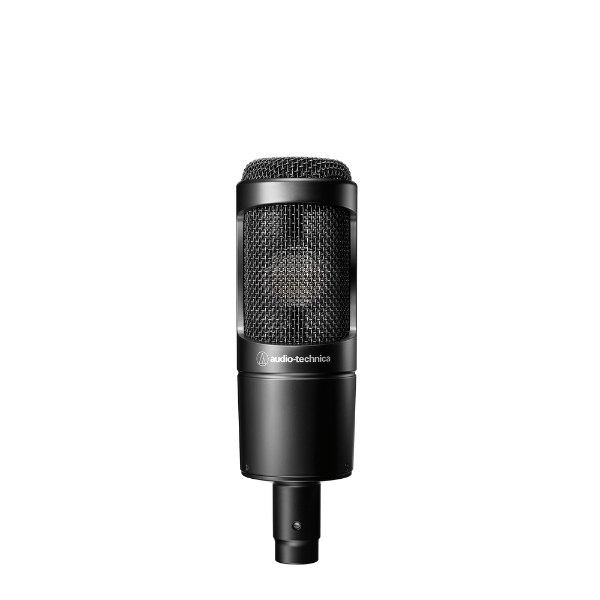
If you want a cheap mic that can do pretty much anything, the Audio-Technica AT2020 matches inherent versatility with a bargain bucket price. Whether you're adding vocals to a song, capturing the sound of a guitar cab, or recording a podcast, it will offer superb performance at a low cost.
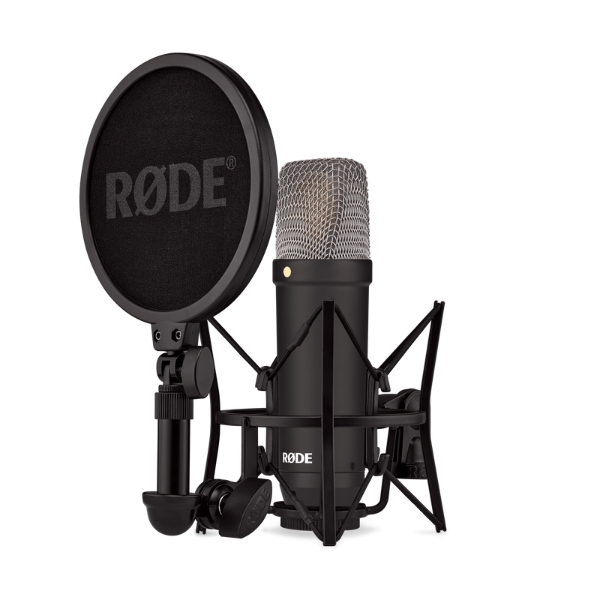
Vocals are at the forefront of any song, whether we like to admit it or not. Getting a good vocal microphone for your home studio is a must, and for me, the Rode NT1 Signature Series delivers impressive performance versus the price point.
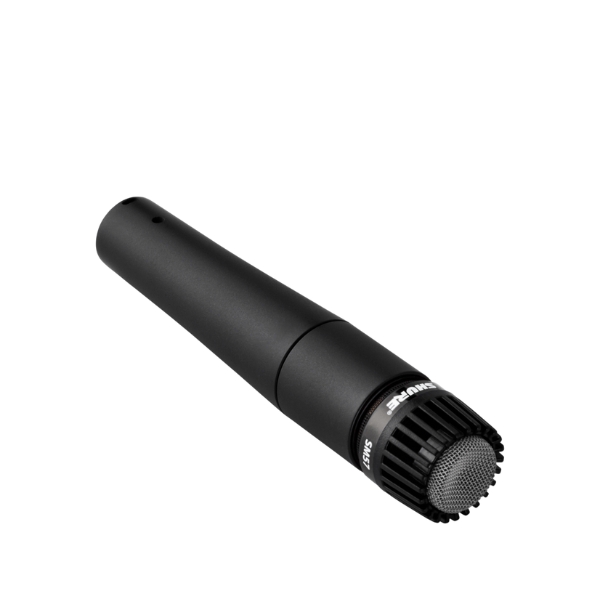
Chances are that if you’ve ever been in a music studio, a rehearsal room, or a live performance, then the Shure SM57 will have had some part to play. Fundamentally inexpensive, it's perfect for guitar cabs and snare drums amongst many other uses.
Best overall
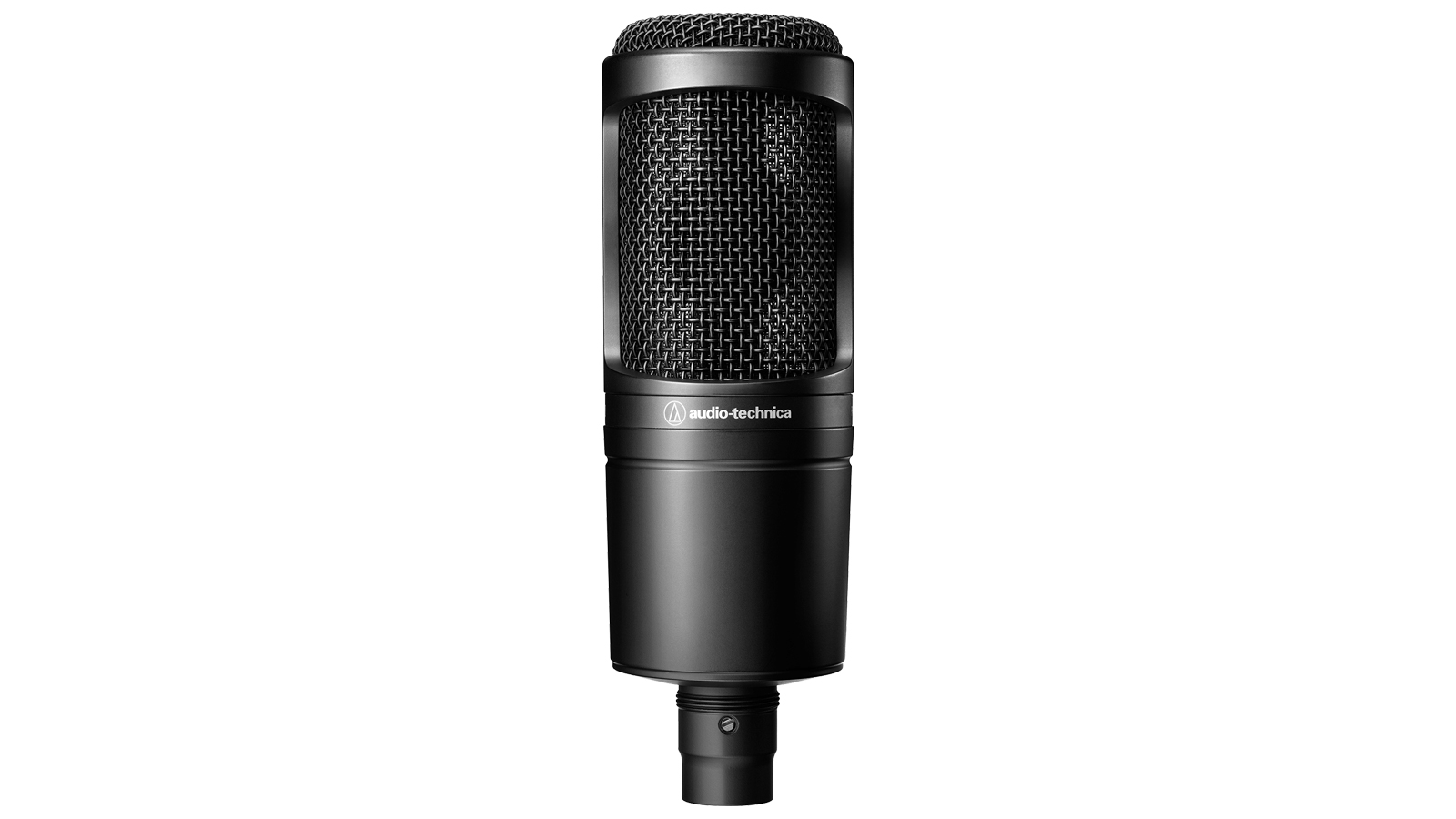
Specifications
Reasons to buy
Reasons to avoid
✅ Buy if you want a cheap all-rounder: The AT2020 is large diaphragm condenser which can deliver on a lot of different instruments for relatively little money.
❌ Avoid if you're starting from scratch: It doesn't include any accessories like pop shield or shock mount, so you might be better off with the NT1 is this is your first mic.
The Audio Technica AT2020 has gotten many plaudits for its open and natural tone, which at this price point is really quite impressive. For use on vocals, pianos, and for capturing room ambiance, it performs remarkably well; you can even use it on a guitar cab to go alongside the more traditional dynamic mic sound too.
It’s got loads of warmth in the lower mid-range, so it will flatter your vocalist immensely, as well as working on a wide range of vocal ranges. It’s got a subtle peak in the high end that adds some air, but never pushes past that into harsh sibilance territory. It rejects off-axis sound remarkably well, and when I tried it on acoustic guitar, it gave us a great sound.
It’s not the quietest mic around, and Audio Technica has omitted a shock mount to keep costs down, but it’s built to the same standard as AT’s heftier-priced mics, making it a worthy addition for the sound engineer on a budget.

"The same thing is broadly true of sung vocals, which make great use of one of the microphone's best qualities - a tonal consistency across a wide dynamic range. We also tested the microphone on acoustic guitar and were pleased with the body sound, in particular."
Read more: Audio-Technica AT2020 review
Best for vocals
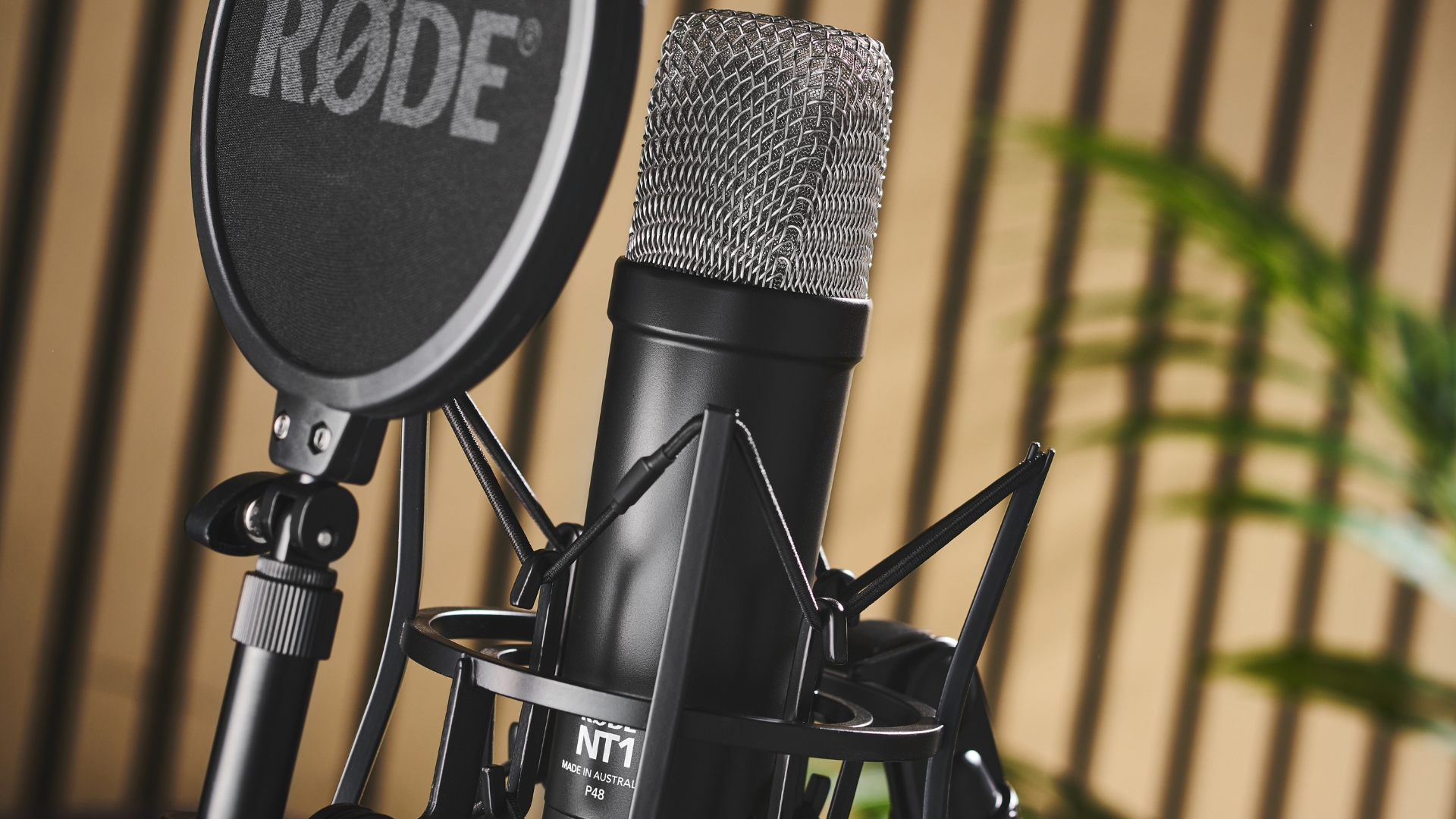
Specifications
Reasons to buy
Reasons to avoid
✅ Buy if you want to record vocals: It's a little more costly than some other mics here, but if you want your vocals to shine this is the best choice for relatively little money.
❌ Avoid if you're on a really tight budget: You might want to spend some that budget on room treatment and get a cheaper mic to make the most of your money.
The Rode NT1 has been the go-to entry-level condenser microphone for well over 30 years now, and it's still a great choice if you want to record good-quality vocals at a low budget. I have two in my mic locker, the older NT1-A, which has served me well over the years, and today's model in the newer NT1 Signature Series.
It's available in a variety of slick matte colours which is great for adding a touch of style to your home studio if you're not a fan of the boring look of a regular microphone. My review model came in black, and the aluminium shell is really durable and resistant to dings and scratches.
For vocals it delivers a neutral sound, but it's not dull by any means. It's incredibly detailed and warm, capturing every nuance of the vocal from the power of a belted note to the closeness of a breathy, spoken word style vocal. It's not as bright as the NT1-A I've used previously which I found to be a positive, as it gave me a more neutral tone to work with.
I also used the NT1 on a variety of sources, starting by using it as a room mic about 8 feet away from a drum kit, where it captured a very true picture of the room sound. It can also handle high volumes, working really well when I placed it against the grille of a 2x10 guitar cabinet.

"My final test was on vocals and here I believe I found the NT1’s raison d’être. Capturing a Billie Eilish-style breathy vocal I was blown away by the warmth and detail in the sound. It’s neutral, but never dull-sounding, despite being darker than the NT1A which I’ve used many times previously."
Read more: Rode NT1 Signature Series review
Best for instruments

Specifications
Reasons to buy
Reasons to avoid
✅ Buy if you want to record instruments: Able to be placed on drums, guitars, vocals, and pretty much anything else, the SM57 is a must-have for any engineer.
❌ Avoid if you're only recording vocals: You can use this on vocals, but a condenser mic will be better if you need that hi-fi sound.
If you’ve seen a band play live in the last 30 years or listened to any music at all in that time, then the chances are you’ve heard the results of a Shure SM57 microphone. Put simply, they are the best-known and most widely used dynamic microphones out there, and they just happen to be cheap as chips!
SM57s are known for their durability. They can be dropped, whacked with a drumstick, launched across the room, and unless you're really unlucky, they will keep working just fine. I've had several SM57s in my time, and I still have the first one I bought nearly 15 years ago. It works just as well today as it did then.
Although primarily an instrument mic, they excel in pretty much any situation. The tight pickup pattern means they receive sound only from one direction and reject it from immediately around it. Hence, they’re great for snare drums, or guitar amplifiers, or anything where you need to capture a specific source. Simply point it and forget it. Happy days.

"There are many reasons why the Shure SM57 remains as popular and ubiquitous now as it ever has done. Particularly for guitarists, this rock-solid, versatile and reliable mic is a trustworthy addition to any recording or performance setup and one you’ll never regret investing in. For under £/$100, it’s as close to a no-brainer as you’ll ever find in the music technology world."
Read more: Shure SM57 review
Best drum overheads
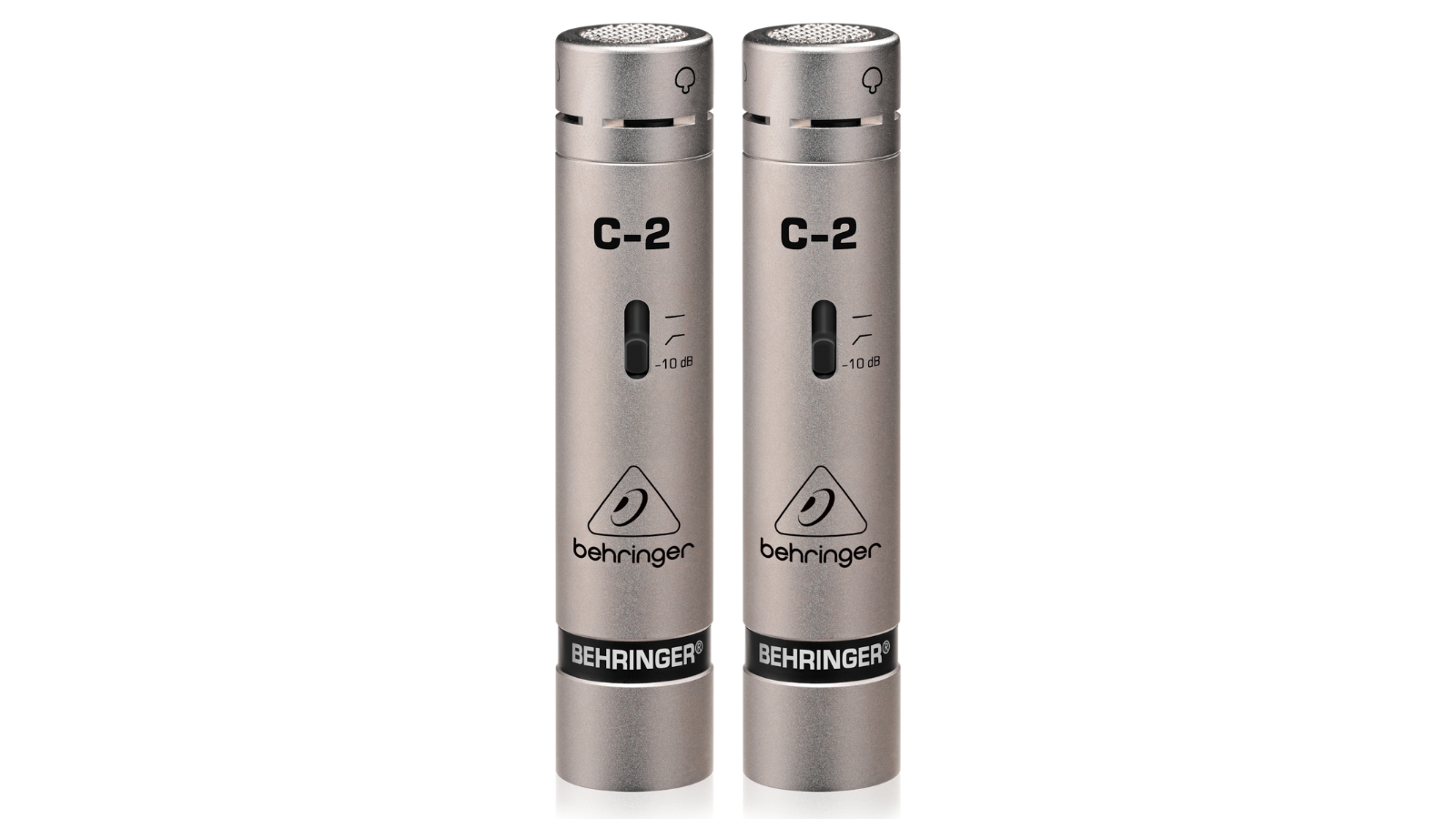
4. Behringer C-2
Our expert review:
Specifications
Reasons to buy
Reasons to avoid
✅ Buy if you want to record drum overheads or stereo sources: As a matched pair these Behringer mics are ridiculously cheap, and they absolutely do the job on stereo sources.
❌ Avoid if you're only recording mono: If you mainly record vocals or single instruments, you'd be better off getting a large diaphragm condenser.
I'll admit I was pretty skeptical when I first came across the Behringer C-2 condenser microphones. A matched pair of mics for less than £50/$60 seems like one of those deals that's too good to be true, but they absolutely do the job when your budget is tight.
I've used this pair for recording drum overheads using the Glyn Johns method, and they work fantastically well, providing a great capture of the true sound of the kit in a room. Paired with a good drummer and well-tuned drums, you can definitely get a great sound with these.
A switchable high-pass filter and pad control on the mic panel make them even more versatile, allowing you to get rid of some of the low-end rumble at the source. They come with a bespoke carry case too, which features a stereo bar mount for capturing acoustic guitar recordings, windshields for both mics, and mic stand mounts.
Best budget ribbon mic

Specifications
Reasons to buy
Reasons to avoid
✅ Buy if you want vintage tones on a budget: Ribbon mics deliver a different tonality to the dynamic and condenser mics on this list, making them a great tool to have in your arsenal.
❌ Avoid if you're after versatility: There are other mics on this list that are more adaptable, whereas this ribbon mic delivers a very specific sound.
It used to be that ribbon mics were the sort of thing you only found in high-end studios, but the t.bone RB 500 gives you those hallowed vintage tones for very little money. It's a figure of 8 pickup pattern, which means it's great for capturing room sounds as it picks up sounds in front and behind of the microphone.
I've used the RB 500 on a bunch of different recordings, and I found it excels as a room mic for drums as well as on a clean or dirty guitar amp. It's a different tone to what you get from a dynamic or condenser, really warm with a very big mid-range focus that's great for removing cymbal harshness or grabbing a great tone from a distorted guitar.
It does require a lot of gain, which is a signature of ribbon microphones, so I'd recommend buying a FetHead or similar inline booster if you plan on recording quieter sources. This does also mean you'll bring up the noise floor, so if you're recording very quiet vocals or acoustic guitar you might find you capture a bit of background noise too.

"Actually, I quite like this mic and if you regularly record rocky guitars, it adds a tonal flavour not really available from other mic types. Given the amazing price, I think it’s well worth checking out. If you’re interested in trying a retro-style ribbon mic the RB 500 offers a capable and very affordable entry point."
Read more: The t.bone RB500 review
Best podcast mic

6. Shure MV7
Our expert review:
Specifications
Reasons to buy
Reasons to avoid
✅ Buy if you want to record a podcast: With its dual USB/XLR connectivity, the MV7 is a great mic for recording podcasts in the home studio or on the go.
❌ Avoid if you're recording music: It'll do the job on a vocal, but there are other mics here that are far more versatile if you're investing in a home studio for music.
The Shure MV7 combines the best of USB recording with traditional XLR capabilities into one of the best budget USB microphones around. If you're looking for a good quality podcasting mic, then this is the one you should go for.
The bundled app, MOTIV, adds real value to the package, allowing you to select from a number of preset tones making it ideal for podcasters and streamers. We also like the auto-level feature, which greatly reduces the risk of accidentally clipping your recordings.
It is, it should be said, not strictly a ‘cheap’ microphone but for the price you get a superbly thought-out, fully-featured microphone that will serve you for years to come. It probably won't suit those who use their studio for music-making, but for podcasters this is an awesome choice.

"What impressed me about the Shure MV7 was the fact it aims to do two things, and it achieves them both successfully. For less tech-savvy users, the MOTIV app and ease-of-use you get from the USB connection is ideal. It works in exactly the way you’d want it to, and is as simple as it gets thanks to helpful tools like the auto-level mode and voice isolation technology. Put simply, if you’ve got a voice it’ll sound great through the MV7."
Read more: Shure MV7 review
Also consider
The above microphones should cover most of the bases if you're looking for cheap recording mics, but it's always good to have a good selection of microphones to choose from in your studio. If you didn't find what you were looking for above, here are some more great options for you.
Shure SM58
Dynamic | Cardioid | XLR
While an SM57 can do vocals, and do them well if you’re a singer you probably want something more readily-equipped to your needs. Thankfully, Shure has you covered. The Shure SM58 is the vocal equivalent of the SM57 and features the same tough construction and reliability but with a slight tweak in its frequency response meaning it enhances mid and upper frequencies to let your voice sing, so to speak.
★★★★½
Read more: Shure SM58 review
SE Electronics sE7
Condenser | Cardioid | XLR
Small diaphragm condenser microphones are great choices where there is a specific tonality you’re looking to recreate perfectly on your recordings. It could be cymbals, or acoustic guitar strings, or anything where you’re not looking to colour a sound too much at the point of recording.
★★★★½
IK Multimedia iRig Mic Studio
Condenser | Cardioid | USB
Not every recording situation is musical, and in the IK Multimedia iRig Studio there exists a superb entry-level microphone for recording podcasts, e-books and voiceovers. The iRig Mic Studio connects to your laptop or mobile device using USB, which makes it simple to get recording in no time.
★★★★☆
Read more: IK Multimedia iRig Mic Studio review
AKG P120
Condenser | Cardioid | XLR
If you’re on a budget but need a versatile, well-made mic that can work equally well across a range of applications then the AKG P120 might just be perfect. As a jack-of-all-trades condenser, the P120 is at home recording vocals, instruments and other sources and provides a balanced, clear sound.
★★★★☆
Audio-Technica AT2005USB
Dynamic | Cardioid | USB/XLR
While the Audio-Technica AT2005USB is one of the cheapest mics on this list, it has a huge ace up its sleeve in that it can function either as a regular XLR mic (meaning it’ll need a mixer or audio interface) or a USB mic, with all the added simplicity that comes with that.
★★★★☆
How to choose
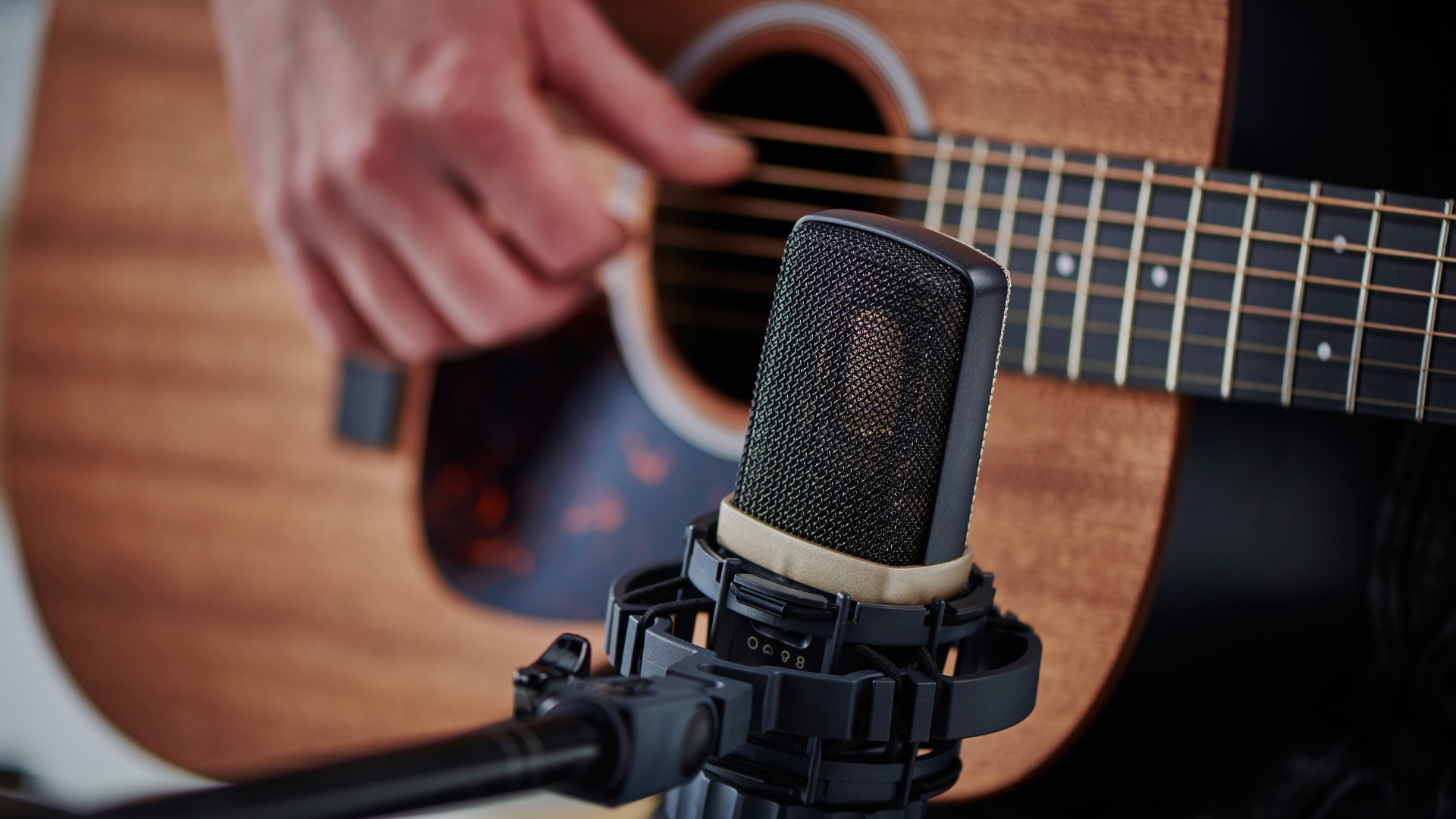
With so many different microphones to choose from, it can be quite initimidating deciding what to go for, especially if you're buying for the first time. I've been recording using mics for over 15 years now, so here's what you should be looking at when buying a cheap mic for recording.
1. What are you recording?
MusicRadar's got your back
Before you even start looking at microphones it's important to look at what you're going to be recording. There's no point buying a dynamic mic if the majority of your recording involves vocals, so figure out your goals before you commit to grabbing something.
2. Mic types
Depending on what you're going to be recording, you'll find certain microphones are better at particular type of recording. For example, a condenser microphone is nearly always better for vocals than a dynamic microphone, whereas most engineers prefer a dynamic mic on a loud source like a guitar cabinet or a snare drum.
Microphones are versatile though, and there's no particular rules on what should be used on which type of instrument. If you're not sure here, I'd recommend going for a large diaphragm condenser like the AT2020 or Rode NT1 Signature Series. Condensers are incredibly versatile, and pick up a lot of detail which makes them great for a wide variety of sources.
3. Room treatment
Even a £1,000 microphone will sound rubbish in a space that isn't well treated, so it's well worth taking some of your budget to invest in kitting out the room you're recording in. It might be you want to buy a reflection filter if you're going to be recording vocals, or it could be adding bass traps, DIY panels, a rug, to a room where you're tracking instruments.
4. Pickup pattern
The vast majority of cheap mics will likely have a cardioid pickup pattern, which means it only picks up sounds from the front of the mic. Some do have different patterns so it's important to check this before you buy. Figure 8 and omni patterns will pick up sounds from behind the mic, which could end up ruining your take if you're not aware of it.
FAQs
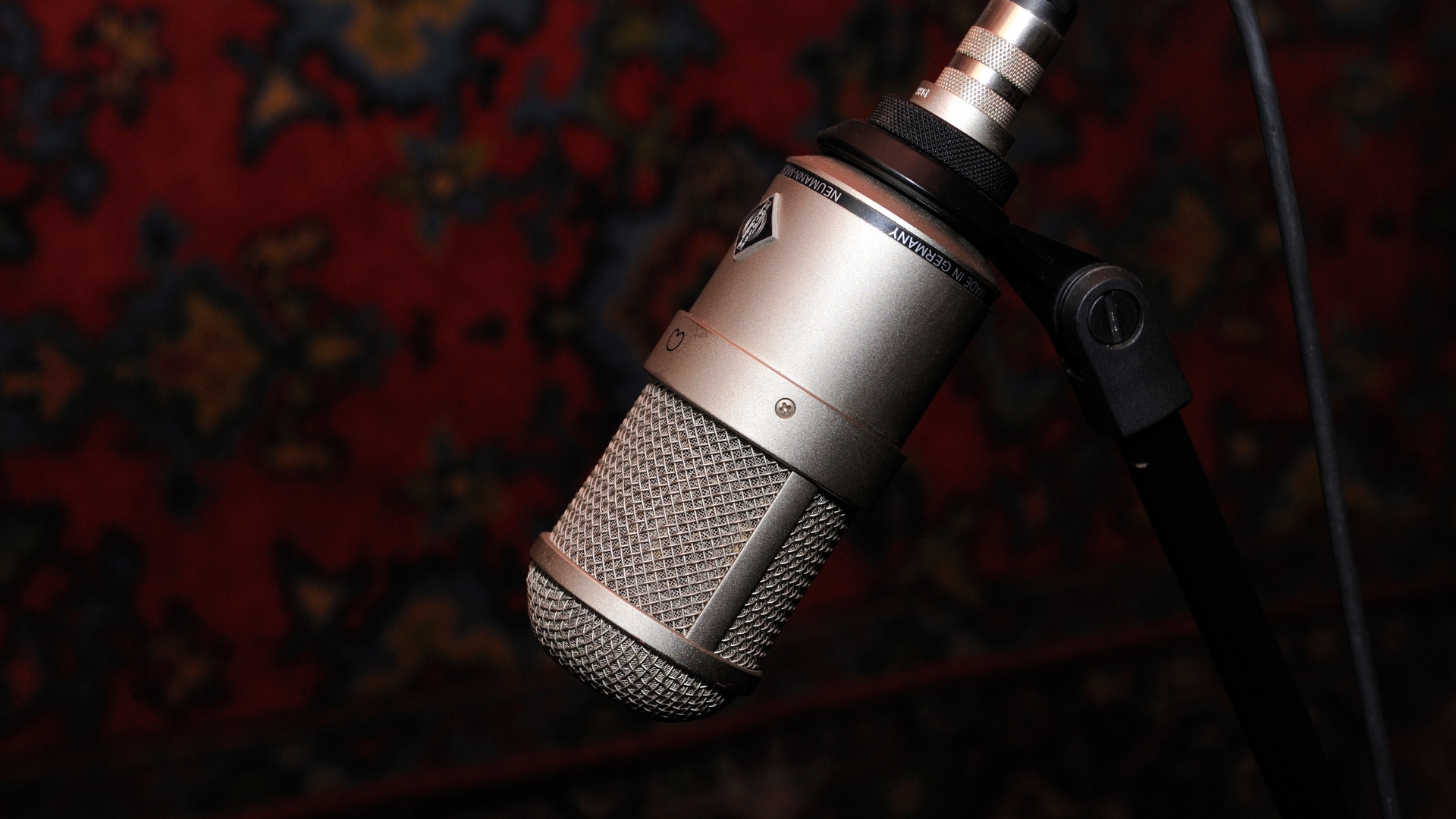
What type of microphone shall I use?
Perhaps the first question you need to ask is how you plan on using the microphone. Microphones suited to live performance or being thrown in your bag after rehearsal, maybe aren’t the same as you’d choose for a studio session where precision and clarity are key.
At the entry-level point, where affordability is key, you’ll likely have a choice between a dynamic or a condenser mic. Dynamic microphones are inherently robust, and reliable. Their construction and method of operation are such that there are no moving parts, and they can be relied upon to thrive in hot, humid, loud environments like stages. They are not, however, considered to be the most precise form of microphone so in a studio situation they may not be the best choice.
Condenser microphones, however, are built with tonality and depth of sound in mind. They’re more fragile than dynamics, for sure, but what they lack in toughness they make up for in warm, rich recorded sound that elevates acoustic instruments and voices to another level.
If you’re looking for simplicity and will be using a laptop or smart device on which to record, you may be better off considering one of the many USB microphones on the market today. You dispel any notion that a USB mic can’t compete with traditional XLR connections - we’ve had great results from a variety of different mics by Shure, IK Multimedia, and others. So, you don’t need to let price be a compromise; check the product section of this guide for the best budget microphones out there today. Your recordings will thank you for it.
What brands make the best cheap microphones?
It's safe to say that you aren't short of choices when it comes to cheap microphones, but with so many out there, it can be challenging to separate the good from the bad.
Our advice would be to stick to the big-name brands, as you know precisely what you are getting. Companies such as Shure, AKG, and Sennheiser are staples of the microphone world, and as well as offering top-of-the-range options, they also have great-sounding units for those on a tighter budget.
That said, two of the most popular microphones in the world, the SM58 and SM57, aren't actually as expensive as you may have thought and are must-have options regardless of your budget.
What is the best budget microphone for vocals?
It’s pretty much established that for recording vocals, you need a large-diaphragm condenser microphone. Thanks to the size of the diaphragm, these mic types pick every nuance of the vocal sound, allowing you to fully capture the dynamics of sung lines. Pretty much any studio you go to will use some variation of this condenser type to record vocals.
Condensers are incredibly sensitive and can pick up everything in the room, which is why you’d rarely want to use one on a live vocal. For live vocals dynamic microphones work best, offering an SPL (Sound Pressure Level) that will handle the vocalist getting really close to the mic and absolutely belting it. Dynamic are typically very rugged as well, so can put up with getting chucked around the stage night after night.
What is the difference between a condenser microphone and a dynamic microphone?
They’re both microphones, but they both operate in completely different ways. Without getting too deep into the science behind it, dynamic microphones use electromagnetism to capture sound, whereas condensers work as a battery. Both use diaphragms that vibrate to capture the sound, similar to how an electric guitar pickup captures the vibration of the guitar string. The difference is a dynamic microphone uses a transformer to boost the signal, whereas a condenser has a magnetic plate which is then boosted using a phantom power supply.
Understanding the science behind these mic types isn’t crucial to using them, instead, it’s the use cases that you’ll want to understand more on. Dynamic microphones are great for loud sound sources, which is why you’ll often find them on live vocals, guitar cabinets, and snare drums. Condenser microphones on the other hand are better suited to natural sound sources like studio vocals, acoustic guitars, and pianos. These aren’t hard and fast rules though. We’ve gotten great sounds from a guitar cab using a condenser microphone, however, you need to be careful not to overload it, so use it on a loud source with caution.
What is phantom power and why do I need it for my microphone?
When condenser mics first appeared in the 1930s, they had big bulky power supplies attached to them to help boost the voltage and enable the signal to be amplified. Led by legendary manufacturers Neumann and Schoeps, the German engineers developed a way to deliver the DC power from the mixing desk and via the mic cable, preventing the need for a bulky additional power supply. Some condenser mics have a battery placed inside the microphone, but for the most part nowadays all condensers use phantom power.
You’ll only need phantom power on a condenser microphone, dynamic mics don’t need them as they already have a transformer inside. Most modern audio interfaces have a phantom power button somewhere, usually labeled ‘+48V’, so if you find you’re getting no sound from your shiny new condenser microphone, this is a good place to start looking!
It’s safe to plug a dynamic microphone into an interface or mixing desk with phantom power engaged as well, although we would recommend turning the power off when plugging or unplugging your mic to prevent any potentially speaker-damaging pops.
Should I use a directional or omnidirectional microphone for recording?
It all depends on what sound source you’re putting the microphone in front of. Omnidirectional microphones capture audio from all directions, whereas directional capture from one particular point on the microphone capsule. There are also cardioid and hypercardioid types, which is what you will often find on condenser microphones, where around half of the mic capsule captures sound whilst the other half rejects it.
To be honest for recording music, you’re not likely to come across many omnidirectional microphones. Typically you’ll be recording a sound source like a guitar cabinet or a singer, so there’s no point in picking up all the extraneous room noise from behind the singer as it will cloud your mix. For professional sound recorders, there are certainly some applications where the omnidirectional microphone is useful, for example recording the room sound in a properly treated acoustic space where a live classical performance is happening. For your average studio engineer or home recording musician, you’re not likely to find a use for one of these.
What is the difference between USB and XLR microphones?
The main difference here is of course the method by which it connects to your computer. A USB mic can go straight into your PC or Mac, whereas an XLR mic requires an audio interface to plug in to. No one method of connection is better than the other, it all depends on what you’re using them for. There are plenty of USB mics that feature the same quality sound as a more traditional XLR mic.
USB microphones are great for people who want a quick fix like game streamers and podcasters. They typically come with their own software and offer the plug-and-play functionality that means you don’t have to mess around with gain staging. Their ease of use means you don’t need any additional knowledge to get a great recorded sound.
An XLR mic on the other hand is more likely to be used in a live music capacity or recording studio. If you want to capture multiple signals at the same time, then XLR mics work much better than their USB counterparts, giving you more control over levels as well as the inputs and outputs.
Key terms

- Cardioid: A pickup pattern that captures sound from the front of the microphone and rejects it from the sides and rear.
- Condenser: A very sensitive type of microphone that's great for vocals and acoustic instruments.
- Diaphragm: The component inside a microphone that captures the sound.
- Dynamic: A robust type of microphone that's ideal for loud sources like drums and guitars.
- Figure 8: A type of microphone that picks up sound from the front and back but rejects sound from the sides.
- Frequency response: The range of frequencies a microphone is able to capture.
- High-pass filter: A filter that cuts low frequencies from a microphone, can be found as a switch on certain mics.
- Omnidirectional: A pickup pattern that captures sound equally from all directions.
- Pad: A switch that reduces the signal level going into the microphone. Useful for loud sources like drums.
- Phantom power (+48V): Electrical power required for condenser microphones, usually fed by an audio interface or mixer.
- Polar pattern: How a microphone picks up sound, also referred to as pickup pattern.
- Proximity effect: A build up of low end that happens when you place a source too close to a microphone.
- Self noise: The internal electronic noise that a microphone produces on its own, usually sounding like a faint hiss.
- Sensitivity: How responsive a microphone is to sounds.
- SPL (Sound Pressure Level): How much sound a microphone can handle, important to know when using more delicate ribbon mics.
- USB mic: A microphone that uses a USB for input instead of the more traditional XLR input.
- XLR: The most common way of connecting a microphone to an audio interface or mixer.
How we test
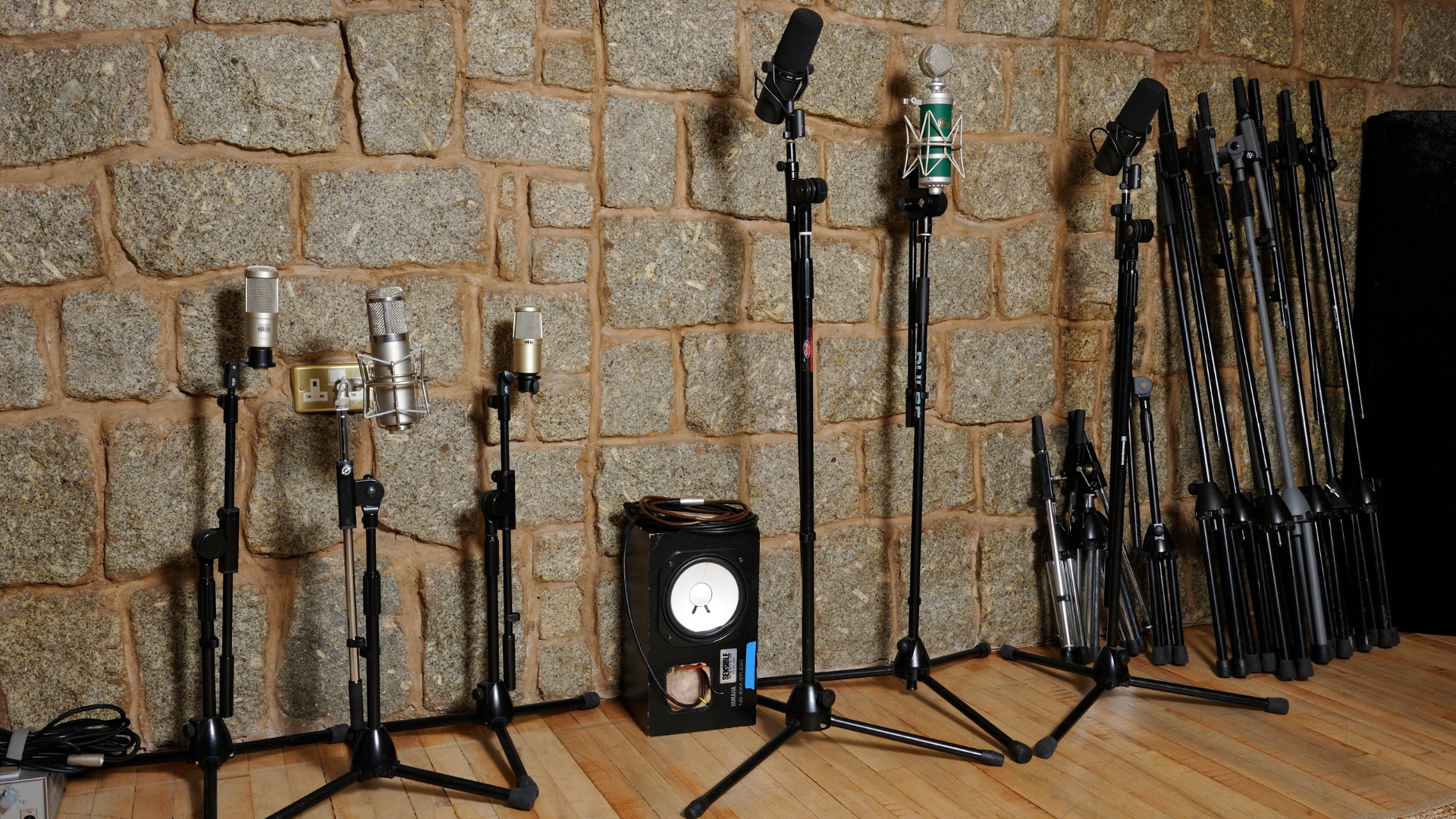
At MusicRadar, many of our writers do their own recording in a variety of musical styles. We all appreciate that not everyone has the budget for a Neumann vocal mic, ourselves included so when it comes to pinpointing the best affordable microphones for recording, we leverages our experience from our own home studios as well as professional use in recording studios.
Selecting a budget-friendly microphone involves a discerning look at factors such as sound quality, versatility, build, and, of course, affordability. We've rigorously tested a variety of microphones, ensuring they deliver exceptional performance without breaking the bank, whether you're a beginner building your home studio or a seasoned producer looking for reliable backup options.
Our guides cover an array of recording scenarios, offering options for vocalists, instrumentalists, and content creators who seek excellent audio on a budget. Each recommendation in our guide has earned its place through thorough testing, guaranteeing that whether you're capturing vocals or instruments, the suggested affordable microphones from MusicRadar will be your trusted companions for achieving quality recordings - minus the hefty price tag.
Find out more about how we test music gear and services at MusicRadar.
More great budget music gear
- Our pick of the best iPhone microphones
- Level up your audio with the best camera microphones
- The best budget studio monitors: affordable studio speakers
- Hold your microphone steadfast with the best mic stands
- Best home studio mixers: analog and digital mixing desks for all budgets
- Make yourself heard with the best XLR microphones
Want all the hottest music and gear news, reviews, deals, features and more, direct to your inbox? Sign up here.

Matt is a Junior Deals Writer here at MusicRadar. He regularly tests and reviews music gear with a focus on audio interfaces, studio headphones, studio monitors, and pretty much anything else recording-related. Matt worked in music retail for 5 years at Dawsons Music and Northwest Guitars and has written for various music sites including Guitar World, Guitar Player, Guitar.com, Ultimate Guitar, and Thomann’s t.blog. A regularly gigging guitarist with over 20 years of experience playing live and producing bands, he's also an alumnus of Spirit Studios, where he studied studio engineering and music production.
